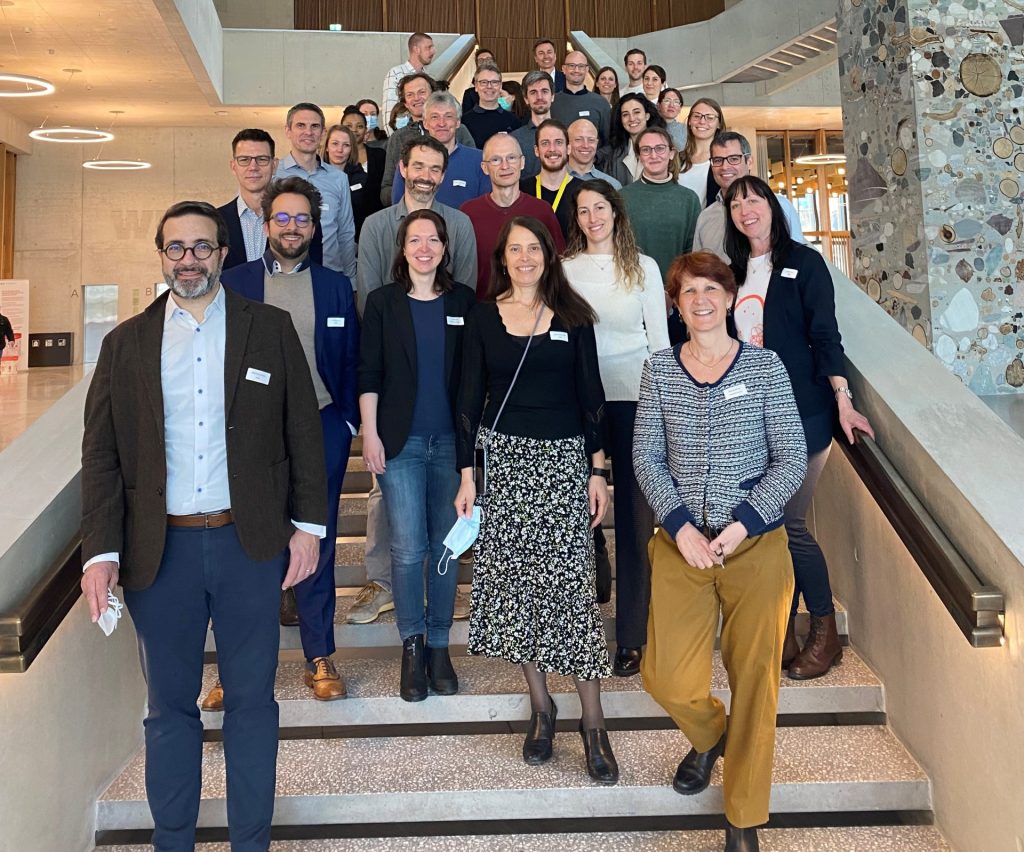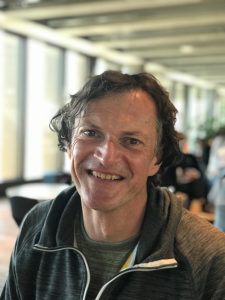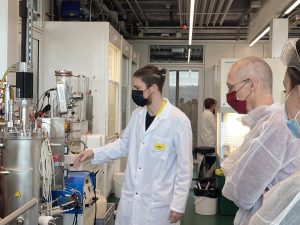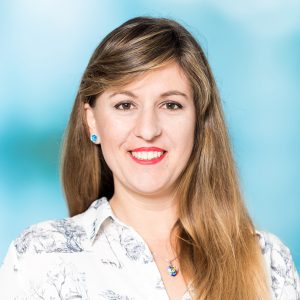
- News
- prev
- next
- prev
- next
News article
What a success! The March 23, 2022 TEDD Platform visit to FHNW School of Life Sciences drew close to 40 participants from industry and academia. Markus Rimann, Leader of the TEDD platform, says the aim was to give people an opportunity to exchange ideas in person. He hopes that those who attended might initiate new projects together. We interviewed three participants from industry to tell us what stood out for them. 
Martin Rausch, Head of Microscopy, Novartis
- In what areas of tissue engineering is your company active?
We are active in almost all areas, including liver, brain, kidney, muscle and tendon with special focus on extra cellular matrix and mechanobiology. Personally I have worked a lot on tumour spheroids, muscle and liver.
- What makes the Tedd event at our campus interesting for you?
The lab tours, networking, and seeing a broad spectrum from basic research to drug discovery.
- Which tour did you visit this morning? Why?
I visited the automated liquid handling for organoid medium exchange, as well as the microphysiological systems for research in toxicology. Having already collaborated with the first group in the past, I wanted to see the latest advances in their lab, as well as discover the MPS work at FHNW that I was not yet familiar with.
- Tell us about something interesting that you discovered here today.
The ADME organ on a chip was particularly novel, and I enjoyed the demo of the mimetas plate. I also enjoyed browsing the student posters along the corridor walls – these are a great snapshot into new ideas or applications that could be relevant to industry.
- Based on your visit, do you think you might collaborate with FHNW on R&D projects? Where do you see potential for collaboration?
This was an occasion to deepen existing relationships I had with FHNW and to explore new collaborations e.g. in the area of neurobiology. I also believe industry has a role in sharing our knowledge with students and providing input about the relevance of their work and approaches from an industrial perspective. This two-way exchange between academia and industry is enriching to both sides, we help each other move forward. 
Marcel Gubler (right), Senior Principal Scientist, Hoffman La Roche
- In what areas of tissue engineering is your company active?
All vital organs including heart, liver, brain, kidney and specialized organgs like vasculature, skin, pancreas. My particular focus is on kidney.
- What makes the TEDD event at our campus interesting for you?
The geographical proximity of FHNW to industry in Basel, the opportunity to network with researchers from academia and the private sector, and the chance to interact with a new generation of young scientists performing high calibre science. These bright young minds are a promising talent pool for pharmaceutical companies like Hoffman La Roche.
- Which tour did you visit this morning? Why?
I had a historical interest in bioprocessing, and wanted to see what advances have been made in bioprocess engineering (Tour C). I also wanted to discover new technologies like microphysiological systems – tissues and organs made from human cells (Tour D). For many drugs and disease applications, there simply are no relevant animal models. MPS not only helps with 3R, it can also provide much more accurate results.
- Tell us about something interesting that you discovered here today.
The highlight for me was interaction with the students. Their fresh thinking and energy help keep my own interest in science alive!
- Based on your visit, do you think you might collaborate with FHNW on R&D projects? Where do you see potential for collaboration?
I see potential to collaborate on lung and kidney models – both for small molecule antibiotics and antivirals, as well as large molecules (biologics) for cancer.
Dimitrios Spiliotopoulos, Head of R&D and Lab Services, XENOMETRIX
- What makes the TEDD event at our campus interesting for you?
It is a great chance to see what the latest activities are and possibly to network. 2. Which tour did you visit this morning? Why? Tour D Microphysiological Systems, because I am interested in which toxicology models are being developed, and Tour B Bioprinting out of curiosity. 3. Tell us about something interesting that you discovered here today. The visit confirmed my perception of how cutting-edge, applied and collaborative the nature of research at FHNW and fostered by TEDD is. 4. Based on your visit, do you think you might collaborate with FHNW on R&D projects? Where do you see potential for collaboration? It would be interesting to develop liver models.
Published
- 25 March 2022
